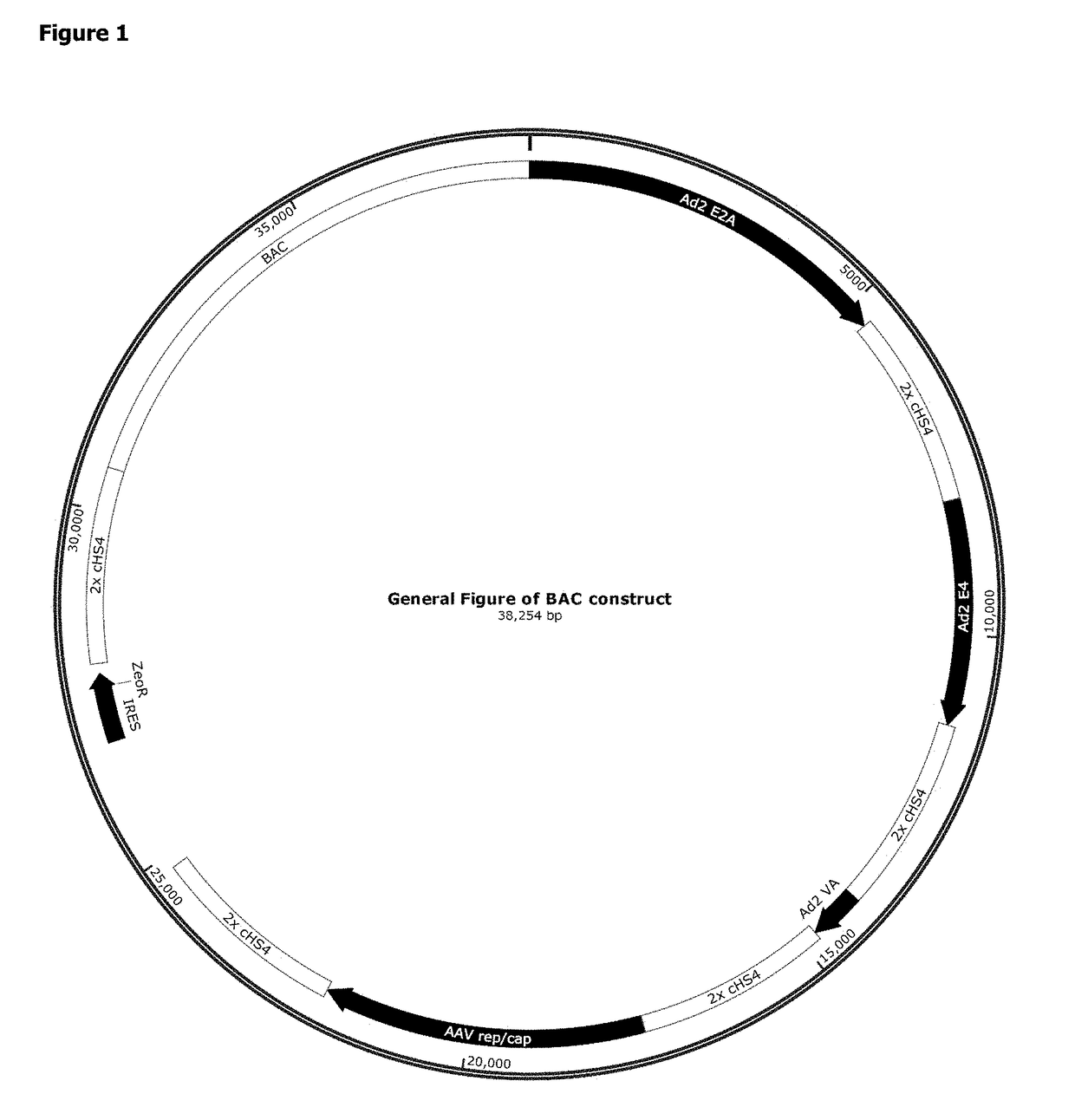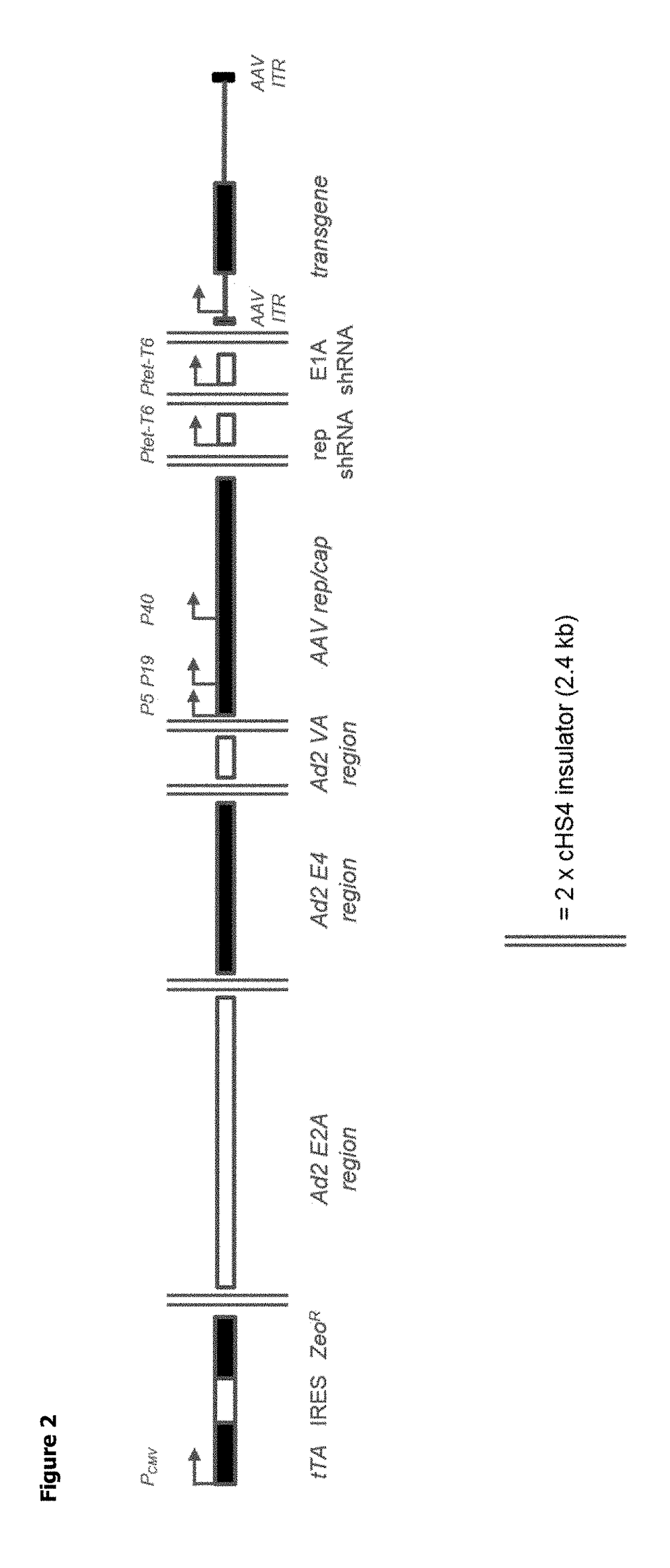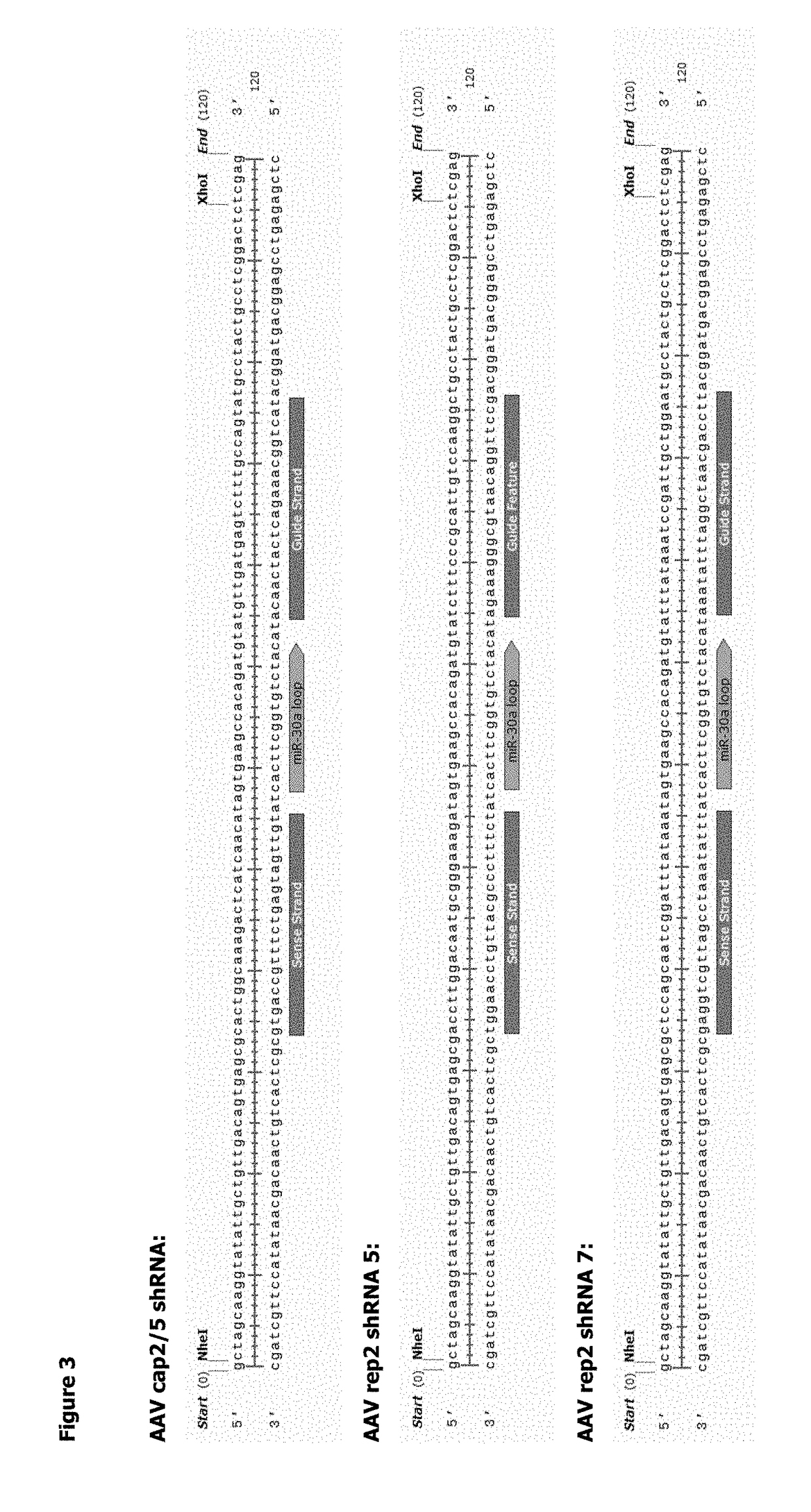Methods for Adeno-Associated Viral Vector Production
a technology of adenovirus and vector production, which is applied in the field of nuclear acid vectors, can solve the problems of difficult to completely remove the adenovirus from the aav product, high labor intensity and high cost of the process, and achieve the effect of easing problems
- Summary
- Abstract
- Description
- Claims
- Application Information
AI Technical Summary
Benefits of technology
Problems solved by technology
Method used
Image
Examples
example 1
AAV Bacterial Artificial Chromosome
[0213]Nucleic acid vectors of the invention may be designed using methods known in the art. A detailed, exemplary method is provided herein:
[0214]Gibson cloning primers are designed to amplify the tetracycline-controlled transactivator (tTA) gene in a construct including a PCMV promoter, an IRES, and a Zeocin resistance gene in the order PCMV-intron-tTA-ZeoR-polyA. The primers allow cloning into the pSMART BAC backbone (Lucigen Corp.) by Gibson assembly. A restriction site for PI-PspI for sequential iBrick cloning (Liu et al. (2014) PLoS One 9(10):e110852, incorporated herein by reference) is included between the polyA and the plasmid.
[0215]Two chicken HS4 (cHS4) insulators in tandem are cloned 3′ of the ZeoR polyA into the PI-PspI site as follows. The 2×cHS4 fragment from pMA-BACmod-GSKCOTR-IR-Zeo is amplified using I-SceI forward and PI-PspI reverse primers. Between the I-SceI site and the 2×cHS4 insulators are restriction sites for MluI and NheI...
example 2
d Synthesis of AAV BAC with Additional Components
[0221]A BAC was created containing every genetic element (i.e. expression cassettes) required for rAAV particle production cloned into it: the AAV rep / cap gene; the helper virus genes and a recombinant DNA genome of an AAV vector particle. Furthermore, additional components were also included as outlined below.
[0222]In order to control the level of AAV Rep expressed in the transfected mammalian cell, it was decided to include shRNA targeting Rep and E1A in the construct under the control of a conditional promoter (Ptet-T6).
[0223]The BAC also includes the tetracyclin-sensitive transcriptional activator, tTA. Under normal growth conditions, suspension adapted HEK293 cells in which the construct is stably integrated into the genome would express the shRNA and Rep and E1A expression would be knocked down. When the cells reached a density suitable for rAAV particle production, doxycycline (DOX) could be added to the growth medium. This wou...
example 3
n of AAV Stable Producer Cell Line (Suspension Cells)
[0322]A stable cell line was established by transfecting AdVec 293 suspension cells with BAC9a-GFP. As a transient transfection control, the AdVec 293 cells were also co-transfected with a rep / cap plasmid, a helper plasmid (carrying helper genes from adenovirus) and pG.AAV.CMV.GFP.P2A.fluc.W6 (transfer vector with ITR flanking GFP transgene) at a 1:1:1 ratio based on molar ratios.
3.1 AdVec 293 RS-D01 Suspension Cells
[0323]AdVec suspension cells were maintained in BalanCD media (with 2% GlutaMAX and 1% Pluronic F-68) at 0.4×106 cell / ml and split every 2-3 days. Cells are incubated 37° C., 5% CO2, 110 rpm. Small scale cultures were maintained at higher rotation (140 rpm) to aid aeration.
3.2 Transfection of AdVec 293 RS-D01 Suspension Cells
[0324]Prior to transfection, cells were centrifuged at 500 rpm for 10 min at 4° C., the supernatant removed and the cell pellet resuspended in fresh pre-warmed BalanCD media, counted and seeded at ...
PUM
| Property | Measurement | Unit |
|---|---|---|
| Volume | aaaaa | aaaaa |
| Volume | aaaaa | aaaaa |
| Volume | aaaaa | aaaaa |
Abstract
Description
Claims
Application Information
 Login to View More
Login to View More - R&D
- Intellectual Property
- Life Sciences
- Materials
- Tech Scout
- Unparalleled Data Quality
- Higher Quality Content
- 60% Fewer Hallucinations
Browse by: Latest US Patents, China's latest patents, Technical Efficacy Thesaurus, Application Domain, Technology Topic, Popular Technical Reports.
© 2025 PatSnap. All rights reserved.Legal|Privacy policy|Modern Slavery Act Transparency Statement|Sitemap|About US| Contact US: help@patsnap.com



